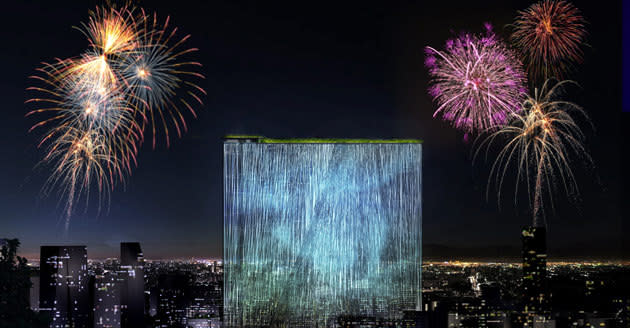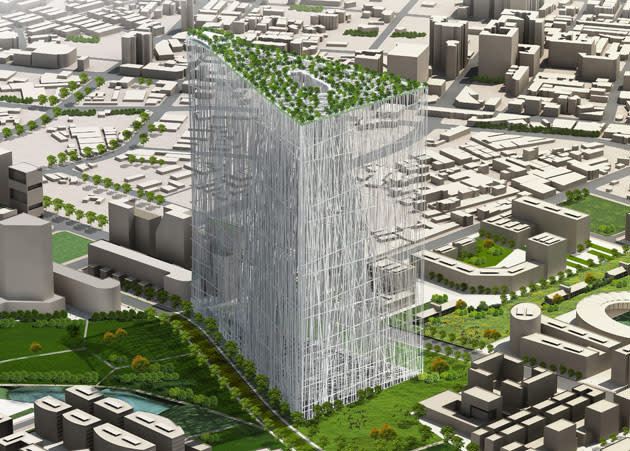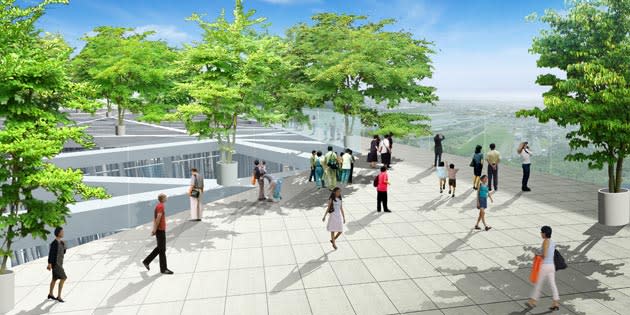 Today in Tech
Today in TechFuturistic Taiwan Tower to borrow design from a tree, will harness renewable energy

Tokyo-based Sou Fujimoto Architects drew inspiration from the banyan tree (known for having a lattice of roots that give it a sturdy base) to create "21st Century Oasis" — a concept that was recently pronounced winner of the Taiwan Tower International Competition. It may not be a candidate to become the world's tallest, thinnest, or wackiest building, but once it's built in the city of Taichung, its one-of-a-kind design and eco-friendly features will surely propel it to global popularity.
The banyan tree part of the building's design comes from its façade to be made up of crisscrossing hollow circular steel columns, arranged to withstand winds and earthquakes. They will be visible to the naked eye as no concrete will encase the wedge-shaped tower, making it a semi-outdoor space. The building's nature thereby eschews the need for a ventilation system and artificial lighting during the day. In the evening, however, the LED lights installed on the beams will illuminate the city. These lights will be able to change color and intensity, and will be programmed to transition into a hazy, sleeping state that'll make the tower look like a gigantic Chinese lantern.

The other main component of the tower is the rooftop island full of plant life, 1,000' above the city. As a park will surround the structure, the island will look like part of the ground if viewed from an aircraft directly above the tower. The rooftop isle represents Formosa, which is Taiwan's old name derived from the Portuguese phrase "Ilha Formosa" that translates into "Beautiful Island." Due to the tower's height, the island is expected to become a symbolic landmark visible throughout the city.
No date was given for the beginning of its construction, but it was already revealed that the Taiwan Tower will house an atrium that spans the height of the building, some museum and exhibition spaces, as well as several renewable energy structures that will provide half of its energy needs. The island-like green roof aside, the tower will have solar panels, wind turbines, ground source heat pump, and rainwater harvesting systems. It's designed to achieve LEED Gold certification for green buildings.

Sou Fujimoto and its Taiwanese collaborator, Fei & Cheng Associates, hope that the tower will eventually be considered as the representative of 21st century architecture, similar to how the Eiffel Tower represented the 20th century. The Taiwan Tower International Competition was launched as part of the Taichung Gateway City project that aims to recreate the space formerly inhabited by the recently relocated Taichung Airport.
[Image credit: Taiwan Tower International Competition]
[via DesignBoom, ArchDaily]
This article was written by Mariella Moon and originally appeared on Tecca
More from Tecca:
